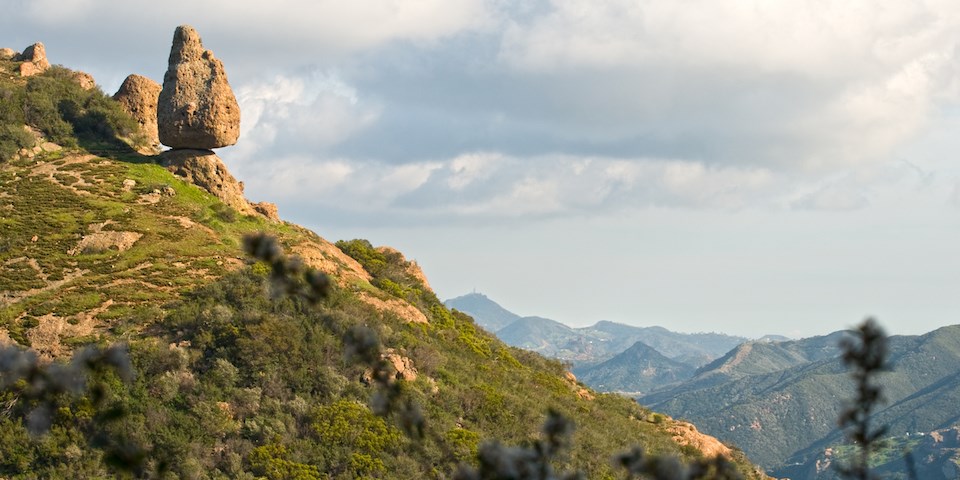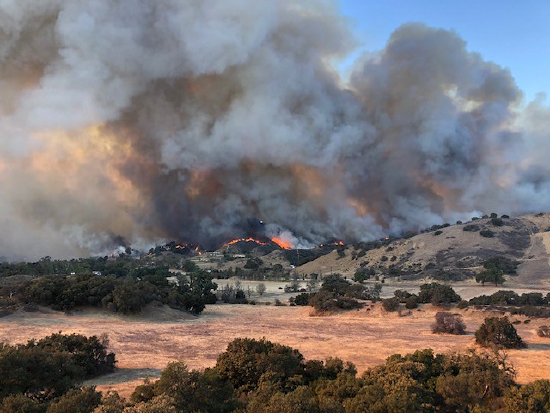5.4.7: Mediterranean (Chaparral)
- Page ID
- 34089
Learning Objective
Recognize distinguishing characteristics of Mediterranean (Chaparral) & plant adaptations of the biome.
The Mediterranean ecosystem occurs only in five relatively small areas around the planet: the area bordering the Mediterranean Sea, central Chile, the Cape region of South Africa, southwestern and southern Australia, and the California Floristic Province (CFP) located on the Pacific Coast of North America. These areas occur along the western edges of continents and are distributed between roughly 30 and 40 degrees latitude in the northern and southern hemispheres. Mediterranean ecosystems are characterized by mild, rainy winters and warm, dry summers and are moderated by cold ocean currents offshore. The annual rainfall in this biome ranges from 65 cm to 75 cm (25.6–29.5 in) and the majority of the rain falls in the cool, wet winter. Summers are very dry and many chaparral plants are dormant during the summertime.
Mediterranean regions make up only 2.5% of the earth’s land but contain more than 16% of the world’s plant species, an impressive level of diversity concentrated in a relatively small area. In the CFP, the majority of the primary vegetation has been damaged or completely removed. The threat of habitat destruction continues today along the coast of California due to the high number of attractive living locations (e.g. close proximity to the ocean) and desirable climate. In addition to the high level of biodiversity, more than a third of the plant species found in the CFP are endemic (not found anywhere else in the world). Because of all these qualities, the CFP is considered to be one of the earth’s biodiversity hotspots, an area of high biodiversity and endemism at risk of destruction. There are a number of widely recognized plant communities in this biome, including Coastal Sage Scrub, Chaparral, Grassland, Wetland, Riparian, Coastal Salt Marsh, and Oak Woodland (Figure \(\PageIndex{1}\)).

Adaptations
The chaparral vegetation is dominated by shrubs and is adapted to periodic fires, with some plants producing seeds that germinate only after a hot fire. The ashes left behind after a fire are rich in nutrients like nitrogen that fertilize the soil and promote seeds to germinate. Other plants store nutrients in their roots and will recover after a fire by re-sprouting from the root crown. Many have fire resistant bark that protects the plant from harm. Periodic fire is a natural part of the maintenance of this biome. Though these communities are well adapted to infrequent, early season fires that are naturally ignited by lightening (and follow rain), they are not adapted to the frequent, late season fires caused by humans. These late season fires often occur during the dryer part of the year, when high Santa Ana winds can produce devastating results. Fires that occur during Santa Ana wind conditions burn longer and hotter, and since they are more frequent, native plant recovery is more difficult (Figure \(\PageIndex{2}\)).
Plants in the Mediterranean biome are also well adapted for conserving water. Small leaves, waxy cuticles, trichomes, and succulence are some adaptations you find on such plants. Others may be deciduous, or have large, deep taproots.

Attributions
Curated and authored by Kammy Algiers using Terrestrial Biomes from Biology 2e by OpenStax (CC-BY). Access for free at openstax.org


